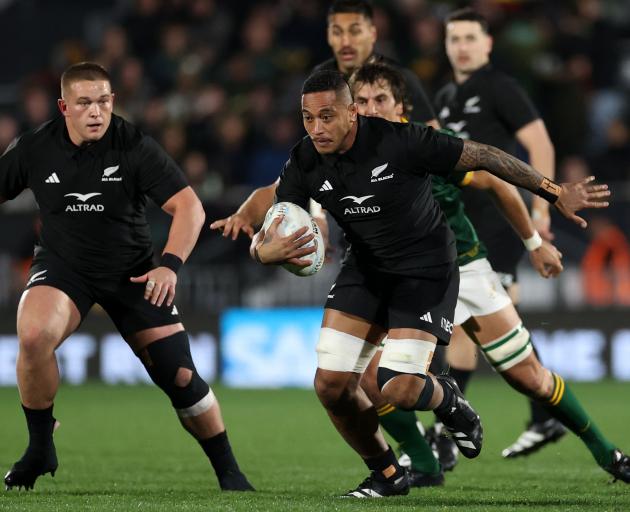The pivotal moment for this change came when the All Blacks made a surprising decision to drop established scrum-half Finlay Christie from their Rugby Championship squad. In his place, 21-year-old Noah Hotham, a rising star from the Crusaders, has been called up. Christie, who was a regular fixture under former coach Ian Foster and played throughout last year’s World Cup knockout stages, was unexpectedly sidelined. The decision reflects a broader strategy by new head coach Scott Robertson to overhaul the All Blacks’ approach to the scrum-half position.
Advertisement
TJ Perenara’s imminent departure to Japan further underscores the shift in strategy. The veteran scrum-half’s decision to move on signals a transition phase for New Zealand rugby, as the team looks to the future. Robertson’s choice to omit Christie in favor of Hotham is not merely a nod to current form but indicates a deliberate pivot towards a new style of play.
Historically, the All Blacks have relied heavily on their fly-half to steer the attack, with recent trends placing additional playmaking responsibilities on the fullback. This structure, however, has proven vulnerable. England’s defense exploited this strategy by pressuring the All Blacks’ No 10, Damian McKenzie, knowing that the scrum-half wasn’t utilized to challenge the defense around the ruck.
Advertisement

France’s success with Antoine Dupont highlights the potential benefits of a more dynamic scrum-half. Dupont, known for his incisive running and playmaking, has been instrumental in France’s tactical approach. The All Blacks seem keen to integrate similar elements into their game, aiming for a scrum-half who can both disrupt defenses and create opportunities.
The first three tests of the year exposed the limitations of the All Blacks’ current scrum-halves. Perenara, despite his experience, struggled with decision-making and pace, while Christie, although capable, didn’t sufficiently challenge defenses or accelerate the game’s tempo. The need for a quicker, more influential scrum-half became apparent, leading to the introduction of Cortez Ratima and Noah Hotham.
Ratima’s performance against England and Fiji demonstrated a significant shift. His ability to inject pace and precision into the game made a noticeable difference, providing the All Blacks with the spark they needed. Similarly, Hotham’s debut was marked by his instinctive running and physicality, showcasing attributes that align with the new direction the team is pursuing.
Steve Hansen, a former All Blacks coach, praised Hotham’s natural ability to find gaps and create opportunities, emphasizing that such qualities are invaluable. “Hotham’s instinctive play brings a new dimension to the attack. He and Ratima offer the kind of threat that can change the dynamics of a game,” Hansen noted.
The All Blacks are placing their faith in this new generation of scrum-halves—Roigard, Ratima, and Hotham—believing that they can bring a fresh dimension to the team’s attack. Roigard, the standout performer from last year’s Super Rugby, is also expected to play a crucial role once he recovers from his knee injury.
As the All Blacks embark on this World Cup cycle, Robertson is clearly intent on evolving the role of the scrum-half, drawing inspiration from the success of players like Dupont. The goal is to enhance the team’s attacking capabilities and adapt to the ever-changing demands of modern rugby.
The All Blacks are undergoing a significant transformation in their approach to the scrum-half position. By seeking out players who can emulate the dynamic impact of Antoine Dupont, they aim to rejuvenate their attack and maintain their status as one of rugby’s premier teams.


Leave a Reply